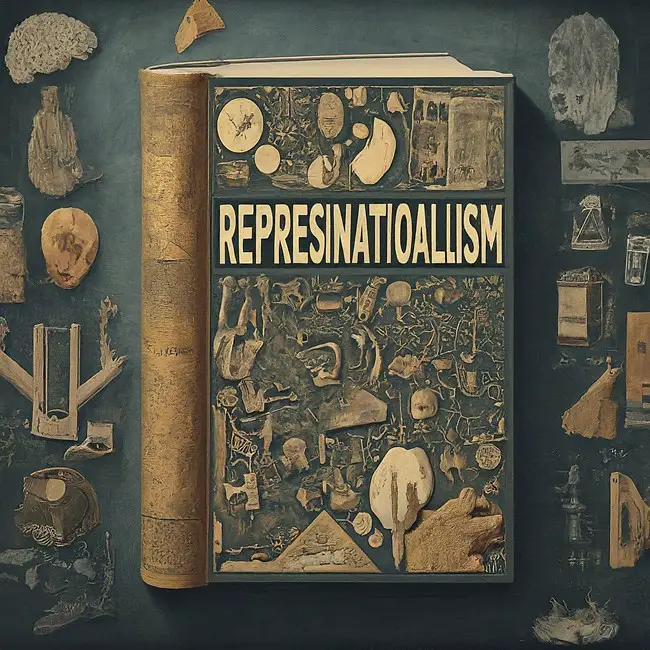
Rhizome: Etymology/Term, Meanings and Concept
Etymology/Term:
The word “rhizome” originates from the Ancient Greek word “ῥίζωμα” (rhízōma), meaning “mass of roots”. This references the root-like appearance of these modified plant stems.
Meanings and Concepts:
- Botanical Definition: A rhizome is a continuously growing, typically horizontal, underground plant stem. It produces shoots above ground and roots below, allowing the plant to propagate and expand.
- Storage Organ: Rhizomes act as storage units for carbohydrates and proteins, helping plants survive unfavorable seasons and propagate vegetatively.
- Vegetative Propagation: Rhizomes enable plants to spread and reproduce asexually. New plants can sprout from the rhizome’s nodes.
- Philosophical Concept: In philosophy, the term “rhizome” was famously used by Deleuze and Guattari to describe a non-hierarchical, interconnected network of ideas and concepts, as opposed to a linear or tree-like structure.
Rhizome: Definition of a Theoretical Term
In theoretical terms, a rhizome refers to a conceptual framework popularized by philosophers Gilles Deleuze and Félix Guattari. It proposes a decentralized, non-hierarchical way of understanding networks and systems, contrasting with traditional hierarchical models like trees. Rhizomatic thinking emphasizes connections, multiplicities, and fluidity, suggesting that knowledge, culture, and society grow in a non-linear manner, with interconnected nodes rather than a single, linear progression.
Rhizome: Theorists, Works, and Arguments
| Theorist(s) | Works | Arguments |
| Gilles Deleuze and Félix Guattari | A Thousand Plateaus (and other works) | * The rhizome represents a decentralized, non-hierarchical, and interconnected way of thinking. * Knowledge and systems are constantly in flux, without a central point of origin. * The rhizome rejects rigid, linear structures of thought. * It emphasizes multiplicity, becoming, and unexpected connections. |
Important Considerations
- The rhizomatic concept has been applied to diverse fields beyond philosophy, including:
- Cultural studies (analyzing power structures, fluidity of identity)
- Literary theory (deconstructing narratives)
- Hypertext theory (understanding the interconnectedness of digital spaces)
Rhizome: Major Characteristics
- Multiplicity and Connectivity: Just as a rhizome grows horizontally, spreading out in multiple directions, literature that embodies this characteristic often features interconnected narratives or themes. Jorge Luis Borges’ “The Garden of Forking Paths” exemplifies this with its complex narrative structure where various storylines branch off from each other, creating a network of interconnected tales.
- Non-Linearity: Rather than following a linear narrative arc, rhizomatic literature may present a fragmented or non-linear structure. A prime example is William Faulkner’s “The Sound and the Fury,” where the narrative shifts back and forth in time, reflecting the disjointed perspectives of its characters and the complex nature of memory and consciousness.
- Fluidity and De-Centering: Rhizomatic literature often challenges traditional notions of authority and hierarchy. In Toni Morrison’s “Beloved,” the narrative weaves together multiple voices and perspectives, disrupting the dominance of a single authoritative narrative and emphasizing the importance of marginalized voices and histories.
These characteristics collectively illustrate how the rhizome serves as a powerful metaphor for understanding the complexities of literary texts and the interconnectedness of ideas within them.
Rhizome: Relevance in Literary Theories
| Literary Theory | Relevance of the Rhizome Concept |
| Poststructuralism | Challenges traditional notions of linear narratives and fixed meanings in texts. Emphasizes the multiplicity of interpretations and the reader’s role in creating meaning. |
| Deconstruction | Undermines the idea of a central, authoritative meaning within a text. Highlights the instability of language and the interconnectedness of seemingly opposing ideas. |
| Reader-Response Theory | Emphasizes the active role of the reader in constructing meaning. The rhizome suggests that a text’s meaning is not fixed but emerges through the dynamic interaction between the text and the reader’s unique experiences and interpretations. |
| Postmodernism | Embraces fragmentation, intertextuality, and the play of signifiers. The rhizome provides a model for understanding how texts reference and build upon each other in a non-linear, interconnected web. |
| Hypertext Literature | The non-linear, branching structure of hypertext directly mirrors the rhizomatic concept. The reader can navigate the text in multiple ways, creating their own unique paths and meanings. |
Rhizome: Application in Critiques
- Moby-Dick by Herman Melville:
- The rhizomatic perspective can be applied to Moby-Dick to highlight its multiplicity of themes, characters, and narrative threads that spread out like the roots of a rhizome. Rather than a straightforward narrative, the novel explores diverse topics such as obsession, nature, and the human condition, interconnected in a complex web.
- Melville’s use of non-linear storytelling, including digressions on topics such as whaling practices and marine biology, reflects the rhizomatic structure. These diversions contribute to the richness and depth of the narrative, creating a multi-layered reading experience that resists easy categorization.
- One Hundred Years of Solitude by Gabriel García Márquez:
- García Márquez’s novel embodies the rhizomatic concept through its portrayal of the Buendía family’s multi-generational saga in the fictional town of Macondo. The narrative branches out in various directions, exploring the interconnectedness of personal and collective histories.
- The novel’s magical realism blurs the boundaries between reality and fantasy, reinforcing the rhizomatic idea of interconnectedness and fluidity. Events and characters recur across generations, creating a sense of continuity and complexity akin to the rhizome’s growth.
- Infinite Jest by David Foster Wallace:
- Wallace’s sprawling novel can be seen as a rhizomatic text due to its fragmented structure, multitude of characters, and interconnected storylines. The narrative branches out in multiple directions, exploring themes such as addiction, entertainment, and existentialism.
- The novel’s use of footnotes and digressions further reflects the rhizomatic structure, with additional layers of meaning and information branching off from the main text. This non-linear approach challenges readers to engage with the text in a rhizomatic manner, making connections across different sections and perspectives.
- The Savage Detectives by Roberto Bolaño:
- Bolaño’s novel exemplifies the rhizomatic concept through its exploration of literary movements, underground culture, and the search for meaning. The narrative follows a group of poets known as the “visceral realists” across different countries and time periods, creating a network of interconnected stories and experiences.
- The novel’s episodic structure and shifting perspectives reflect the rhizomatic nature of the narrative, with different characters and events emerging and receding like nodes in a sprawling network. Bolaño’s use of multiple voices and styles underscores the interconnectedness of literature and life, echoing the rhizome’s emphasis on multiplicity and diversity.
Rhizome: Relevant Terms
| Term | Botanical Definition | Philosophical Definition |
| Node | Points on the rhizome where shoots and roots emerge. | Points of connection and potential growth within a network. |
| Internode | The section of the rhizome between nodes. | The lines of flight or movement between connections. |
| Lateral Growth | The horizontal expansion of the rhizome. | The spread of ideas or concepts in non-hierarchical ways. |
| Clonal Growth | Asexual reproduction from the rhizome. | Replication and self-similarity within a system. |
| Determinate Growth | Rhizomes with limited growth potential. | Ideas or structures with defined boundaries. |
| Indeterminate Growth | Rhizomes with unlimited growth potential. | Open-ended systems with potential for constant expansion. |
| Heterogeneity | Variations within a rhizome system. | Diversity and difference within a network. |
| Multiplicity | The presence of multiple nodes and connections. | Abundance of potential interpretations or pathways. |
| Deterritorialization | Breaking free from fixed structures or territories. | Challenging traditional boundaries and hierarchies. |
| Becoming | A state of constant change and transformation. | Emphasizing process and flux over fixed states. |
Rhizome: Suggested Readings
- Deleuze, Gilles, and Félix Guattari. A Thousand Plateaus: Capitalism and Schizophrenia. Translated by Brian Massumi, University of Minnesota Press, 1987.
- Foucault, Michel. The Archaeology of Knowledge. Translated by A.M. Sheridan Smith, Routledge, 2002.
- García Márquez, Gabriel. One Hundred Years of Solitude. Harper & Row, 1970.
- Haraway, Donna. Simians, Cyborgs, and Women: The Reinvention of Nature. Routledge, 1991.
- Melville, Herman. Moby-Dick; or, The Whale. Harper & Brothers, 1851.
- Morrison, Toni. Beloved. Alfred A. Knopf, 1987.
- Wallace, David Foster. Infinite Jest. Little, Brown and Company, 1996.
- Bolaño, Roberto. The Savage Detectives. Translated by Natasha Wimmer, Farrar, Straus and Giroux, 2007.
- Borges, Jorge Luis. Ficciones. Translated by Anthony Kerrigan, Grove Press, 1962.
- Calvino, Italo. Invisible Cities. Translated by William Weaver, Harcourt Brace Jovanovich, 1974.








